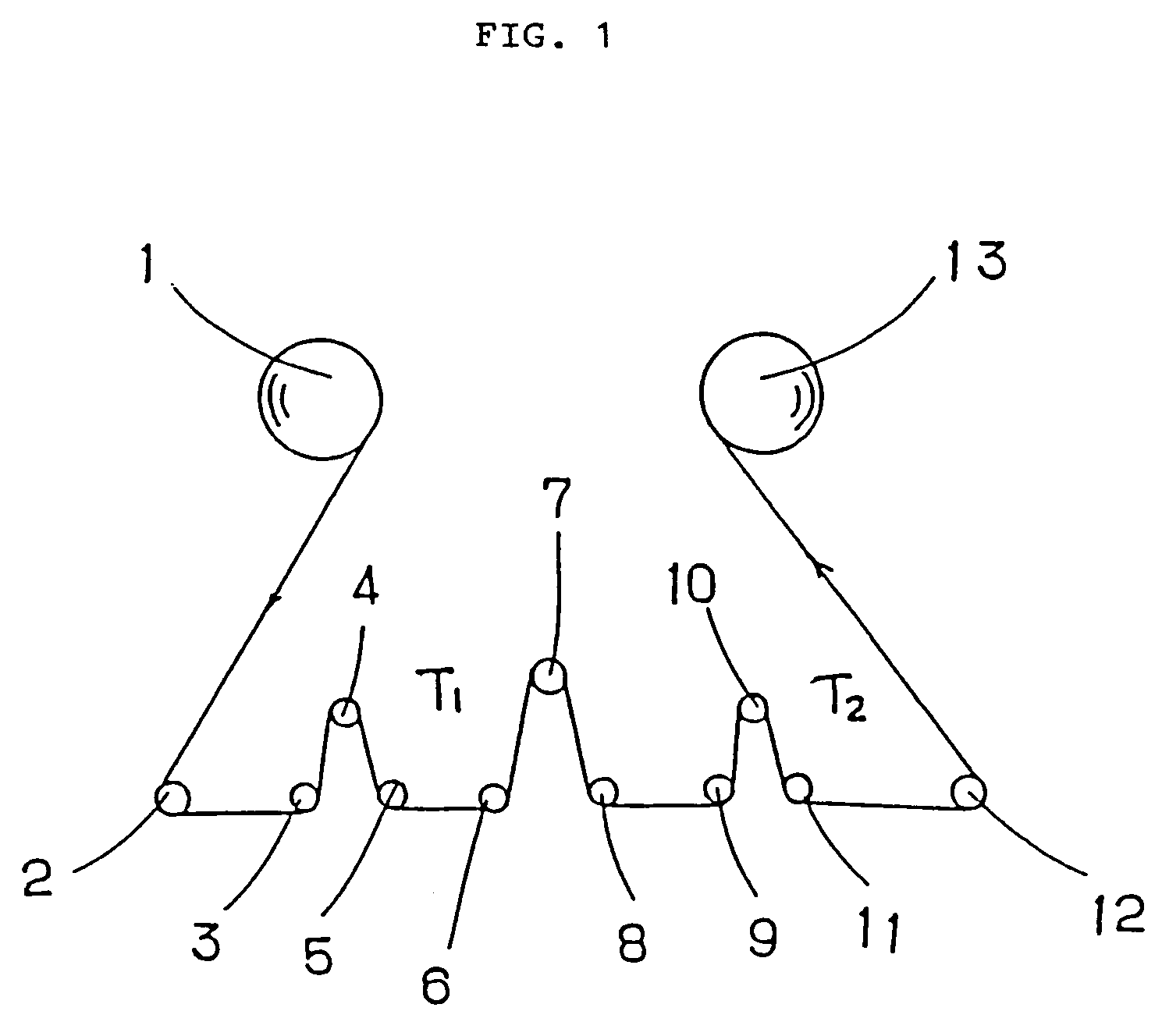Agglomerate and resin composition containing the same
a technology of agglomerate and resin, which is applied in the direction of pigment paste, calcium/strontium/barium carbonates, pigment treatment, etc., can solve the problems of deterioration of film and sheet transparency, dissociation of particles from resins, formation of slight scratches, etc., to avoid deterioration of film transparency, suppress haze, good anti-blocking and slipping properties
- Summary
- Abstract
- Description
- Claims
- Application Information
AI Technical Summary
Benefits of technology
Problems solved by technology
Method used
Image
Examples
example 1
[0167]To an aqueous 11.8 wt. % calcium hydroxide suspension 10 kg, citric acid (a chelating agent: pKa with Ca ion=3.16) was added in an amount of 5 wt. % to the amount of calcium carbonate (1.492 kg) to be theoretically obtained by the reaction and then under strongly stirring condition, 100% carbonic acid gas was blown at 12 l / min. rate to carry out carbonation and when pH reached 7.8, the reaction was finished. It is noted that water 2 kg was added at the time the viscosity of the reaction system reached the maximum during the carbonation reaction.
[0168]The obtained calcium carbonate suspension was dried by a spray drier and after pulverization by an impact stud mill Kolloplex manufactured by Alpine Corp., and being mixed with 9 wt. % of stearic acid, the calcium carbonate was surface-treated at 115° C. by using a Henshel mixer and further pulverized to obtain a dry powder having the following properties (dry treatment).
[0169]The obtained particle was in the form of an agglomerat...
example 2
[0171]To an aqueous 11.2 wt. % calcium hydroxide suspension 10 kg, malic acid (a chelating agent: pKa with Ca ion=2.14) was added in an amount of 3 wt. % to the amount of calcium carbonate (1.417 kg) to be theoretically obtained by the reaction and then under strongly stirring condition, 100% carbonic acid gas was blown at 12 l / min. rate to carry out carbonation and when pH reached 7.4, the reaction was finished. It is noted that water 2 kg was added at the time the viscosity of the reaction system reached the maximum during the carbonation reaction.
[0172]The obtained calcium carbonate suspension was heated to 60° C. and under stirring condition, lauric acid in an amount of 7 wt. % to the amount of the calcium carbonate was dissolved in water 400 g heated to 65° C. and then the calcium carbonate suspension was added to carry out surface treatment (wet treatment).
[0173]The obtained surface-treated calcium carbonate was pressed by a press filter until the solid matter reached 53 wt. %...
example 11
[0177]In a double tubular reaction chamber having an inner cylinder and a gas diffusion plate, a 10.2 wt. % calcium hydroxide-water suspension 90 kg was mixed with citric acid (a chelating agent: pKa with Ca ion=3.16) in an amount of 5 wt. % to the amount of calcium carbonate (9.72 kg) to be theoretically obtained by the reaction and then 35% carbonic acid gas was blown at 280 l / min. rate and when pH reached 6.6, the reaction was finished.
[0178]The obtained calcium carbonate suspension was heated to 80° C. and under stirring condition, Nonsoul SK-1 (potassium stearate), industrial soap produced by Nippon Oil & Fats Co., Ltd., in an amount of 10 wt. % to the amount of the calcium carbonate was dissolved in water heated to 80° C. and then the obtained solution was added to the calcium carbonate suspension to carry out surface treatment (wet treatment).
[0179]Thereafter, pressing was carried out by a press filter until the solid matter reached 53 wt. % and the pressed product was dried ...
PUM
| Property | Measurement | Unit |
|---|---|---|
| particle diameter dp50 | aaaaa | aaaaa |
| particle diameter dp50 | aaaaa | aaaaa |
| BET specific surface area | aaaaa | aaaaa |
Abstract
Description
Claims
Application Information
 Login to View More
Login to View More - R&D
- Intellectual Property
- Life Sciences
- Materials
- Tech Scout
- Unparalleled Data Quality
- Higher Quality Content
- 60% Fewer Hallucinations
Browse by: Latest US Patents, China's latest patents, Technical Efficacy Thesaurus, Application Domain, Technology Topic, Popular Technical Reports.
© 2025 PatSnap. All rights reserved.Legal|Privacy policy|Modern Slavery Act Transparency Statement|Sitemap|About US| Contact US: help@patsnap.com

